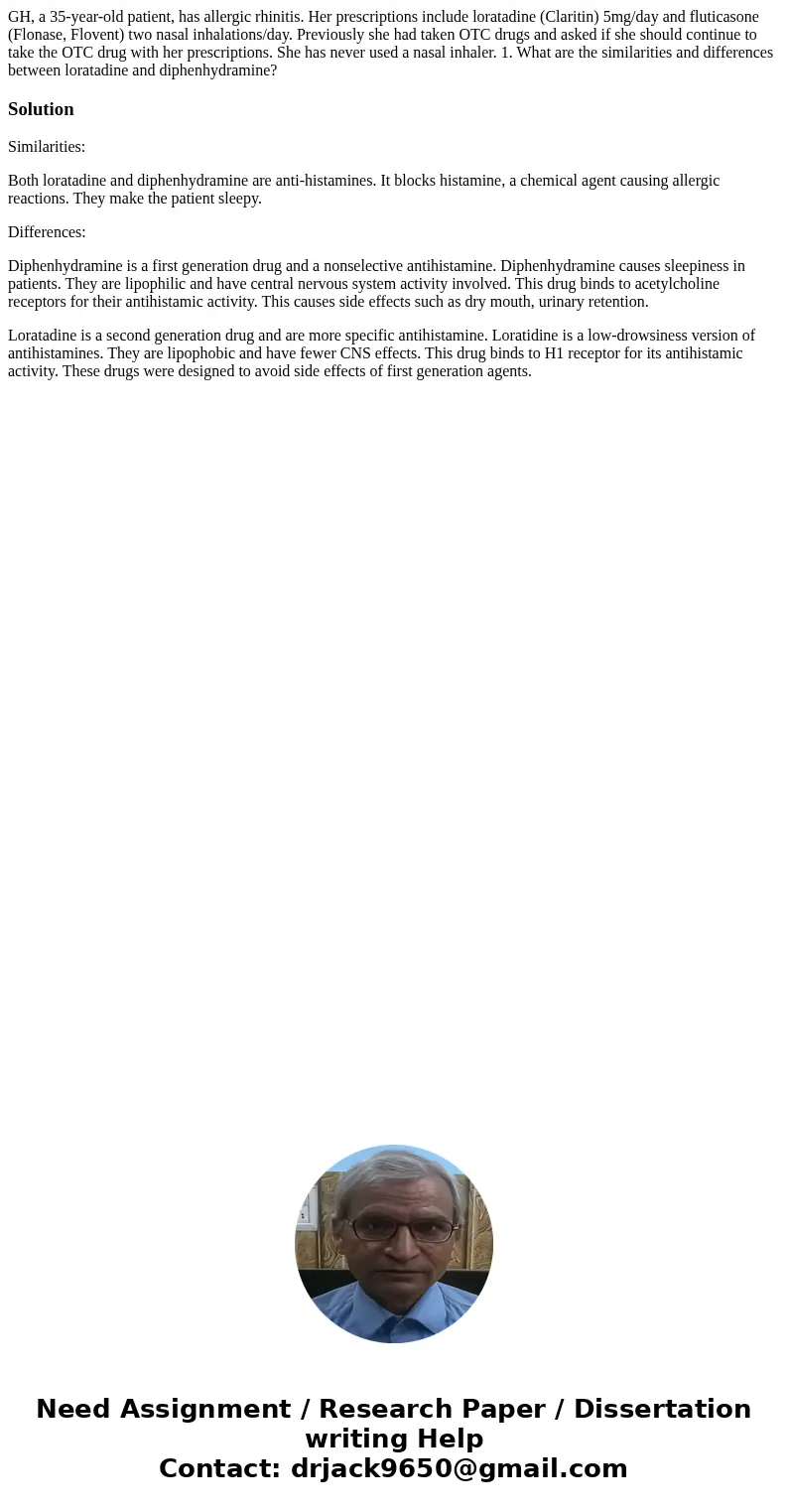GH a 35yearold patient has allergic rhinitis Her prescriptio
GH, a 35-year-old patient, has allergic rhinitis. Her prescriptions include loratadine (Claritin) 5mg/day and fluticasone (Flonase, Flovent) two nasal inhalations/day. Previously she had taken OTC drugs and asked if she should continue to take the OTC drug with her prescriptions. She has never used a nasal inhaler. 1. What are the similarities and differences between loratadine and diphenhydramine?
Solution
Similarities:
Both loratadine and diphenhydramine are anti-histamines. It blocks histamine, a chemical agent causing allergic reactions. They make the patient sleepy.
Differences:
Diphenhydramine is a first generation drug and a nonselective antihistamine. Diphenhydramine causes sleepiness in patients. They are lipophilic and have central nervous system activity involved. This drug binds to acetylcholine receptors for their antihistamic activity. This causes side effects such as dry mouth, urinary retention.
Loratadine is a second generation drug and are more specific antihistamine. Loratidine is a low-drowsiness version of antihistamines. They are lipophobic and have fewer CNS effects. This drug binds to H1 receptor for its antihistamic activity. These drugs were designed to avoid side effects of first generation agents.

 Homework Sourse
Homework Sourse